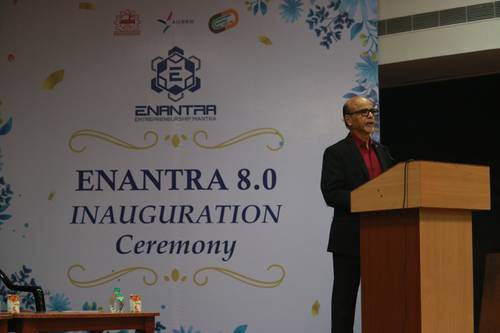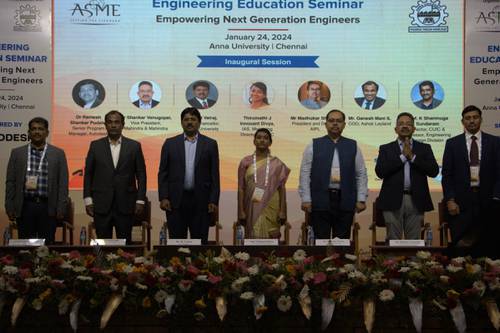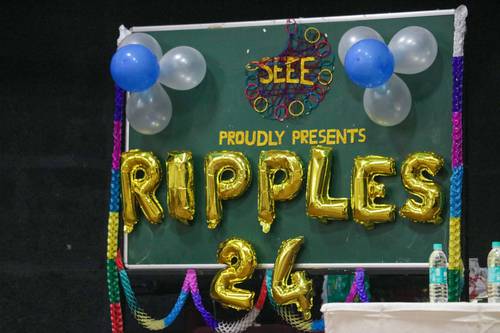A one-day awareness program on first aid was organised by the Students’ Association of College of Engineering Guindy, on 7th January, 2017 (Saturday) at Vivekanandha Auditorium.
The event, split into two sessions – the morning (9:30 am to 12:30 noon) for volunteers of NSS, and the afternoon (2 pm to 5 pm) for their counterparts in NCC, NSO and YRC – was conducted in association with an NGO named ‘Alert’. The first session, saw trainer Ms Pallavi explain the nuances along with co-trainers Mr Jagadish and Mr Nivetha, after Mr Karthik, Assistant Manager of Alert, shed light on the need to know about the right first aid methods during emergencies.
The session started with the trainer stating the amendment that has been made in the Motor Vehicle Act, 1988 (Section 134) which reinstates that people who are not willing to produce themselves as witnesses of accidents cannot be forced to do so. This ensures that, people can help out victims, and can also bail out from the stringent procedures. This was supplemented by the mention about Good Samaritan Law, which would make sure helpers are not treated with suspicion under the law.
The speaker then asked the students, what their first instinct would be, if they happened to see a victim. The various answers included stop bleeding, managing the crowd, trying to prevent unconsciousness, reassuring the victim things would be fine, informing the family and calling the ambulance. This was aptly followed by the explanation about the Chain of Survival.
This chain includes steps, which should be followed in the order mentioned, at any cost.
- Early ambulance
- Early CPR (Cardio-Pulmonary Resuscitation)
- Early AED (Automated External Defibrillator)
- Effective ALS (Advanced Life Support)
- Post Cardiac Care
The speaker stated that the ambulance, which came as one of the last replies, should always be on top of the priority list. At this juncture, she also applauded the people who dealt with emergency situations, stating, “It is not easy for someone to deal with emotional trauma and pain of people every day as a routine activity.”
The second and the most important step of the procedure involves keeping the victim conscious, and these are the ABCs to be kept in mind – Air, Breathing and Circulation.
- Air - The congenial, uncrowded environment that would enable free supply of air to the victim.
- Breathing – This involves three stages, viz. Look, Listen and Feel.
- Look: Keep one’s ear near the nose of the victim to see if he/she is breathing.
- Listen: Focus on the belly and abdominal region to see if the respiration is uniform.
- Feel: Decide if the person is descending back to unconsciousness.
- Circulation – This implies, checking if the victim’s pulse is normal. This can be done by keeping the index and middle fingers of any one hand on the region of soft tissue towards the left or right of the Adam’s Apple (for men), and slightly towards the left or right of the center (for women).
Ms Pallavi, asked the audience, to try each step out with the adjacent member to see the practicality. She interacted with the participants, asking which organ is vital in case of emergencies, and negated the options “heart” and “lungs”, stating that heart could be activated at all times by AED, and lungs by manual pressing of the torso. Instead, the airway or the wind pipe (known as trachea) is the most important organ, because when the victim falls, his/her tongue will fold inside, thereby, blocking the wind passage into the body.
While stating that Advanced Life Support is the medical care with injections and other advanced equipment, that would form part of the medical emergency kit in the ambulance, the host enlightened the participants on Basic Life Support (BLS), which comprises the following steps:
- Check for scene safety – One should not try to help a victim when the surrounding situation is not favorable (high traffic, fast moving vehicles across the roads, etc.). One must take the plunge to help only when the surroundings become favorable.
- Check responsiveness of the victim – This can be done by either tapping on shoulders of the victim continuously, and/or shouting their names (if known) or something like “What happened?” loud and very close to their ears.
- Help and ambulance – See if the ambulance is arriving after the complaint.
- Breath check – This would involve the ABCs stated earlier. Since the heart is situated at the center of the chest and slightly towards the left, the procedure would involve pressing the heart to revive blood circulation and consciousness. On this note, there is something called as V-point, the region where the ribcage converges. One must press the body 2 inches above this V point to bring the victim back to stability. As it would be difficult to find the V-point for an obese person, it would be advisable to press the region 2 inches from either side of the nipple.
- Put victim in a recovery position – See that the victim is in a congenial environment, and he/she is not in a state of partial or full unconsciousness.
This was followed by the demonstration and hands-on session for the participants to know how to perform BLS procedures, finally bringing the session to an end. Bala, President – Students Association, CEG, stated, “Unseen circumstances and lack of knowledge about first aid leads to several fatal casualties. So we thought we could do our part in making our students aware through this program.” True to that, it was a very informative day for the students, getting to know the nuances of saving a person at crucial times.





